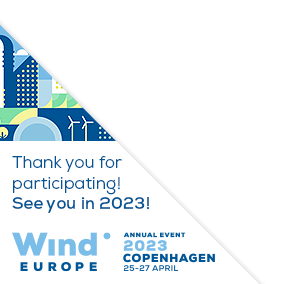Posters
Siblings:
ProceedingsProgrammeSpeakersPostersContent PartnersGlobal Markets TheatreWindTalks for InnovationProgramme Committee & Abstract ReviewersSpeaker's DashboardCome meet the poster presenters to ask them questions and discuss their work
Check the programme for our poster viewing moments. For more details on each poster, click on the poster titles to read the abstract. On Wednesday, 6 April at 15:30-16:15, join us on Level 3 of the Conference area for the Poster Awards!

PO136: Self-prediction performance as a proxy to estimate the uncertainty in data-filling for representative offshore wind resource assessments
Julia Gottschall, Chief Scientist, Fraunhofer Institute for Wind Energy Systems (IWES)
Abstract
Floating lidar systems (FLS) are the de-facto standard measurement technology for offshore wind resource assessment. However, the relatively lower post-processed system availabilities of FLS compared to offshore platforms, bring the requirement that the uncertainty and bias introduced by a data gap are understood in a quantifiable manner. Therefore the performance of a measure-correlate-predict (MCP) algorithm with linear least squares was analysed in detail using two years of the Ijmuiden met mast (MMIJ) measurements. Different gap periods starting with one day up to sixty days were investigated to find a quantifiable metric to forecast the performance of the data-filling algorithm with ERA5 as reference dataset. For each gap period, the gap was cut from the combined dataset, introducing a measured period with an artificial gap. An omnidirectional linear least regression was fit within this training period between the measured and reference hourly wind speeds values. This model fit was used to obtain both self-prediction performances and to predict the wind speeds at the introduced artificial gap. The comparison of the root mean square errors (RMSE) of the mean wind speed (MWS) of the self-prediction and validation period show a strong negative correlation for the investigated periods, obtained from the metrics of the incremental gaps within the calculated gap period. There is a possibility that the function of this relationship can be used as a proxy to assess the quality of the prediction (following the MCP approach), and with this the uncertainty on the wind statistics associated with the gap-filling.










Follow the event on: